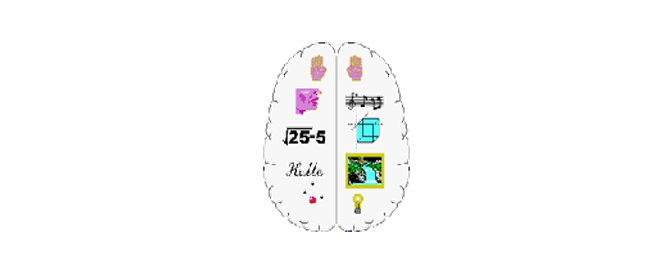The Inheritance of DNA and Epigenetics.
Partly taken from Bruce Lipton and then thanks for most of the article by Jerome Whitney.
In the 1940’s, C.H. Waddington coined the title Epigenetics by combining the terms genetics and epigenisis.
Dr. Bruce Lipton is a diehard scientist. He’s devoted his life to understanding human biology and behavior. He received his PhD from the University of Virginia at Charlottesville, and then went on to the University of Wisconsin School of Medicine, where he was an associate professor of anatomy.
With his traditional track record, why do some people see him as controversial? Why did he step down from teaching medical students and strike out on a career path few had traveled? Simply put, Dr. Lipton has discovered that things aren’t what they seem to be. Nor are they what he was teaching in med school or what we’ve been told to believe.
“Our health is not controlled by genetics,” he said in his characteristically upbeat and excited manner. “Conventional medicine is operating from an archaic view that we’re controlled by genes. This misunderstands the nature of how biology works.”
Jerome Whitney on the field of DNA & Epigenetics
Jerome has devoted his life to seeking truth, a Homeopath by trade yet a student or lecturer most of his life in health & healing through esoteric studies.
What is Epigenetics?
Currently one of the biological sciences hottest topics now emerging into the public domain is Epigenetics.
Epigenetics is the search to understand and/or modify the processes that activate inheritable changes in gene expression, without directly affecting the DNA.
As noted in the opening paragraphs, the field of epigenetics is not new – only its naming is recent. Combined interest in the broad spectrum of inheritance and stages of development goes back many centuries. However by the early 20th century the territory had become narrowly specialised when the separate disciplines of genetics and embryology emerged. Subsequently the return movement toward drawing them back together proceeded at a gradual pace from the 1940’s when C.H. Waddington coined the title Epigenetics by combining the terms genetics and epigenisis. The intensity of interest and rate of involvement in epigenetic processes and research has subsequently accelerated since the last decade of the 20th century.
Evolution of working models of evolution

In 1809 Lamarck explained the nature of evolution as being controlled by three biological laws:
1) Environmental influence on organ development.
2) Gradual change in body structure and function based on weakening of characteristics not
required and strengthening of characteristic that are useful.
3) The inheritance of acquired characteristics
As the 20th century unfolded, the genetic inheritance of disease became established in 1910 with the publication of data to show the inheritable nature of Sickle Cell Anaemia. By 1920 DNA had been identified and in 1959 Downs Syndrome characteristics were found to be the result of the presence of an additional chromosome.
Meanwhile, following WW II support for the concept of inheritance of acquired characteristics progressively became a scientific non-topic reduced to the point of ridicule and disinformation. This fact was demonstrated in American high school biology texts of the latter 20th century that discredited the Lamarckian model by noting that if the tails of rats for 35 generations were cut off, the 36th generation would still be born with tails.
Recently published, however, and outlined below, is a trial demonstrating that nicotine induced asthmatic pathology in a parent generation of rodents has been diagnosed in succeeding generations of their species. This evidence-based study is another one of an increasing number that are putting to rest the anti-Lamarckian disinformation, vilification, and scapegoating that was spread throughout much of the 20th century.
The background to the disinformation regarding Lamarck’s model that had been perpetrated particularly in the West may be traced to the emergence of international communism in the 1920’s and the subsequent clandestine ‘cold war’ between east and west that evolved during the 1930’s in the fields of politics, art, and science.
Genetics a casualty of the Cold War
However, the objective scientific understanding of inheritance during the mid and late 20th century became increasingly distorted and manipulated by the Cold War and pre Cold War political confrontations between those nations backing capitalism and those supporting communism. This sad saga of international political manipulative spin, rather than objective facts, even reached right down to the teaching of propagandist biology in high school classrooms in both the East and West as well as preventing advances in research relating to the field of epigenetics.

This was due to it also being supportive of communist ideology of creating a truly ‘socialist’ human being devoid of capitalist tendencies and was ultimately indoctrinated into the very thought patterns of school children. Meanwhile the capitalist West, in response, following the same pattern of indoctrination took on board the hard line of genetic determinism teaching its children that genes change only by mutation. As in most polarised “I’m right, you’re wrong” stand offs; there was truth and error in the beliefs of each.
Due to the obstinacy of both cold war ideological opponents, it took fifty years following the discovery of the double helix for an emergent understanding to dawn that gene expression is also under the inheritable influence of factors not directly present in DNA. Having openly misinterpreted and rejected the implications of Lamarckian principles, the West has had to covertly reintroduce them through the back door as epigenetics so as to not loose face and status within the world community. It is an on going reality of our human condition that we would rather loose the truth than admit our errors!
The epigenetic implication of a recent nicotine pathology inheritance study
The study ‘Perinatal Nicotine Exposure Induces Asthma in second generation offspring’ Oct 2012 has demonstrated that:
1) Gene activation of changes by means other than mutation is inheritable.
2) The processes for switching gene function on and off are also inheritable.
3) Although DNA may carry the basic blue print for inheritance, its activation is subject to separate inheritable
functions that may ultimately result in permanent modification of genetic expression.
Pandora’s epigenetic box has been opened:

TO BE CONTINUED:
Essential Bibliography
Aspaturian, Vernon 1961 Lecture in “Cold War Politics” at the Pennsylvania State University.
Following WW II, Professor Aspaturian served as Chief of the Russian desk in the Psychological Warfare section of the United Nations General Headquarters in the Far East Command.
Welisane Besingi and Åsa Johansson. Smoke related DNA methylation changes in the etiology of human diseas. Human Molecular Genetics, December 2013
http://hmg.oxfordjournals.org/content/early/2013/12/10/hmg.ddt621.abstract
BMC Medicine 2012 Perinatal nicotine exposure induces asthma in second-generation offspring 10:129 Sept 30
http://www.biomedcentral.com/1741-7015/10/129/abstract
The Economist 2012 ‘Epigenetics and Health: Grandma’s curse’ Nov 3
http://www.economist.com/news/science-and-technology/21565573-some-effects-smoking-may-be-passed-grandmother
Bell, Chris 2013 Epigenetics: How to alter your genes, The Telegraph 16 Oct 2013
http://www.telegraph.co.uk/science/10369861/Epigenetics-How-to-alter-your-genes.html
Carey, Nessa 2011 The Epigenetics Revolution, Icon Books: London
Dominguez-Salas, Paula, et al Maternal nutrition at conception modulates DNA methylation of human metastable epiallels: Nature Communications
http://www.nature.com/ncomms/2014/140429/ncomms4746/full/ncomms4746.html
Feilden, Tom 2012 “Not-so-identical twins may hold the key to disease: BBC News Oct 23
http://www.bbc.co.uk/news/science-environment-20039466
ç
Hughes, Virginia 2014 The Sins of the Father Nature 5th March 2014
http://www.nature.com/news/epigenetics-the-sins-of-the-father-1.14816
Jablonka, Eva & Lamb, Marion 2005 Evolution in Four Dimensions, MIT Press: Cambridge Mass.
An important study that will not be appreciated for many years hence.
Leake, Jonathan 2008 How your behaviour can change your children’s DNA, The Sunday Times 20th July.
http://www.lehman.edu/deanhum/philosophy/platofootnote/PlatoFootnote.org/Talks_files/epigenetics.pdf
Marzotto, Marta et al Extremen sensitivity of gene expression in human SH-SY5Y neurocytes to ultra-low doses of Gelsemium sempervirens BMC Complementary & Alternative Medicine
http://www.biomedcentral.com/1472-6882/14/104
Medical News Today 2010 ‘Epitwin: Largest Ever Epigenetics Project Launched’, Sept 7
http://www.medicalnewstoday.com/releases/200170.php
Moalem, Sharon 2014 Inheritance: How our genes change our lives – and our lives change our genes, Grand Central Publishing: New York
Watters, Ethan 2006 DNA Is Not Destiny: The New Science of Epigenetics
http://discovermagazine.com/2006/nov/cover
Zolfagharifard, Ellie 2014 Nature CAN cope with climate change: Unusual behaviour of plants and animals suggests we’ve underestimated their ability to adapt, claim studies
http://www.dailymail.co.uk/sciencetech/article-2622454/Nature-CAN-cope-climate-change-Unusual-behaviour-plants-animals-suggests-weve-underestimated-ability-adapt-claim-studies.html




